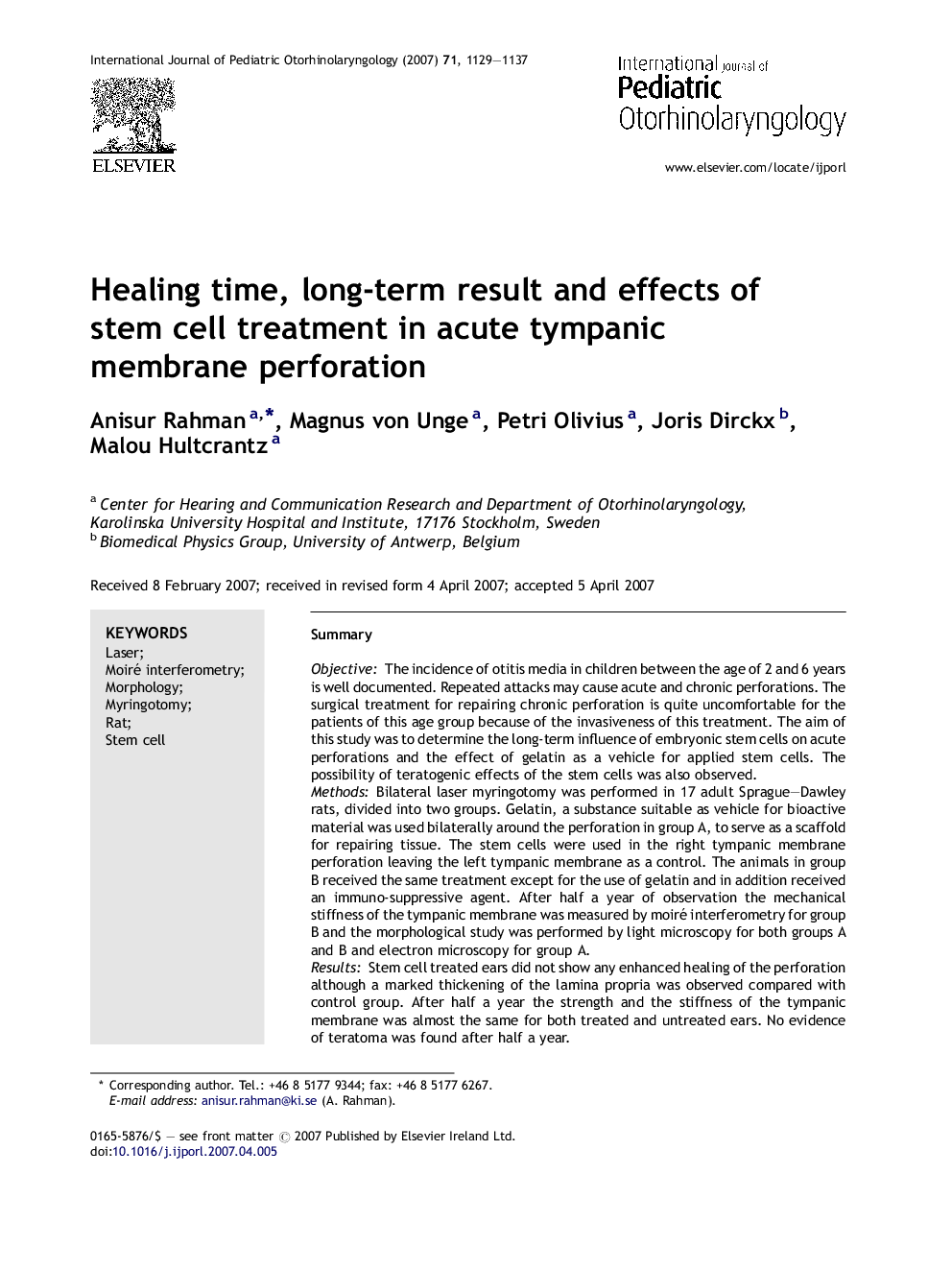| Article ID | Journal | Published Year | Pages | File Type |
|---|---|---|---|---|
| 4113993 | International Journal of Pediatric Otorhinolaryngology | 2007 | 9 Pages |
SummaryObjectiveThe incidence of otitis media in children between the age of 2 and 6 years is well documented. Repeated attacks may cause acute and chronic perforations. The surgical treatment for repairing chronic perforation is quite uncomfortable for the patients of this age group because of the invasiveness of this treatment. The aim of this study was to determine the long-term influence of embryonic stem cells on acute perforations and the effect of gelatin as a vehicle for applied stem cells. The possibility of teratogenic effects of the stem cells was also observed.MethodsBilateral laser myringotomy was performed in 17 adult Sprague–Dawley rats, divided into two groups. Gelatin, a substance suitable as vehicle for bioactive material was used bilaterally around the perforation in group A, to serve as a scaffold for repairing tissue. The stem cells were used in the right tympanic membrane perforation leaving the left tympanic membrane as a control. The animals in group B received the same treatment except for the use of gelatin and in addition received an immuno-suppressive agent. After half a year of observation the mechanical stiffness of the tympanic membrane was measured by moiré interferometry for group B and the morphological study was performed by light microscopy for both groups A and B and electron microscopy for group A.ResultsStem cell treated ears did not show any enhanced healing of the perforation although a marked thickening of the lamina propria was observed compared with control group. After half a year the strength and the stiffness of the tympanic membrane was almost the same for both treated and untreated ears. No evidence of teratoma was found after half a year.ConclusionThis study suggests that the stem cells stimulate the proliferation of connective tissue and fibers in the lamina propria, possibly mediated by secreted substances, although the stiffness properties do not seem to be altered. The use of gelatin does not seem to enhance the healing process of the tympanic membrane perforation.
